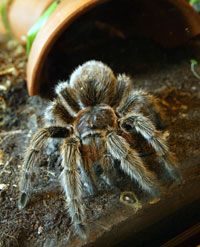Humans have used poison to dispatch their enemies and rivals for a very long time. Some of history’s greatest figures met their ends through poisoning. For publicly criticizing the ruling class, the Greek philosopher Socrates was executed in 399 B.C. by being made to drink a cup filled with poison hemlock [source: Linder]. Hemlock depresses the central nervous system, leading to slowed respiration and pulse before the body shuts down [source: Perdue].
Around 3,000 B.C., the Kemite pharaoh Menes was documented as the first person to conduct research into poisons. Menes gave rise to a sophisticated knowledge of poisons among the Egyptians culminating 1,500 years later. A papyrus (ancient Egyptian document) dated circa 1553 B.C. found in Luxor, Egypt, in 1872 lists 700 different drugs (including poisons) of animal, mineral or plant origin [source: Hayes].
Advertisement
The Luxor papyrus also includes another significant source of ancient knowledge: antidotes to the poisons it listed. It’s a safe bet that about the same time humans came to understand poisons, they set about looking for antidotes to them. Some of these antidotes proved more effective than others. For example, whiskey was a standard treatment for snakebites in the 19th century. Experiments conducted by Brazilian researchers in the 1920s proved the method was worthless. Even worse, it actually hastened death by improving blood circulation and thus speeding delivery of the venom to the organs [source: New York Times].
These same Brazilian doctors also came up with a clever method of fighting the effects of venom on humans by employing the same venom as an antidote -- using poison to fight poison. Researchers realized that by introducing gradually increased doses of snake venom into large animals like horses, the animal’s immune system would produce antibodies called antivenin that fight off the venom. Antivenin was extracted from the hemoglobin of an immunized horse’s blood, and, when introduced into the bloodstream of a snakebite victim, it attached to the venom and prevented it from interfering with normal body processes.
Other poisons have been shown to counteract the effects of poisons, and some are still being used in labs today. Find out more on the next page.
Advertisement

